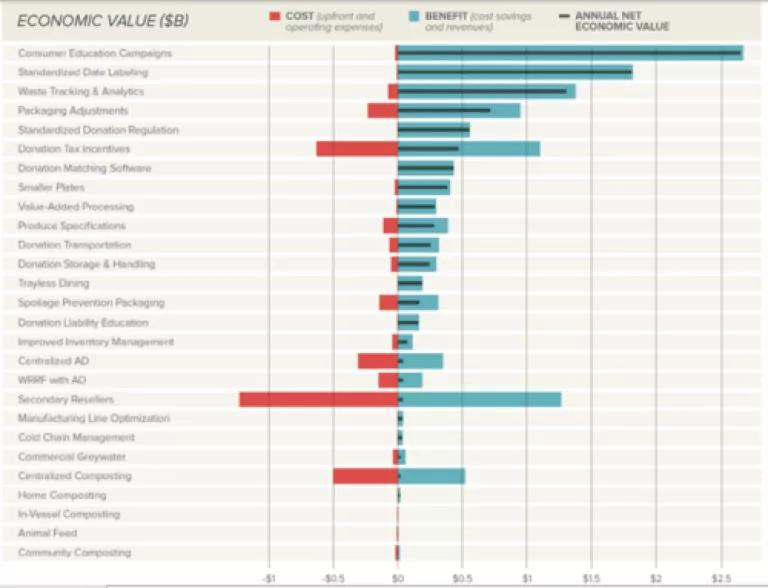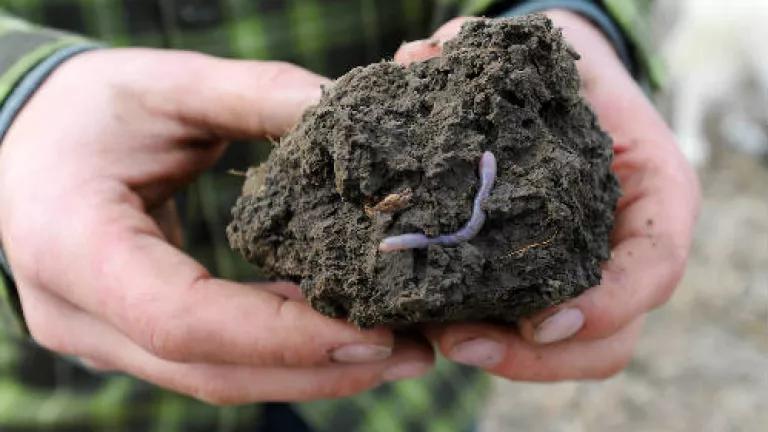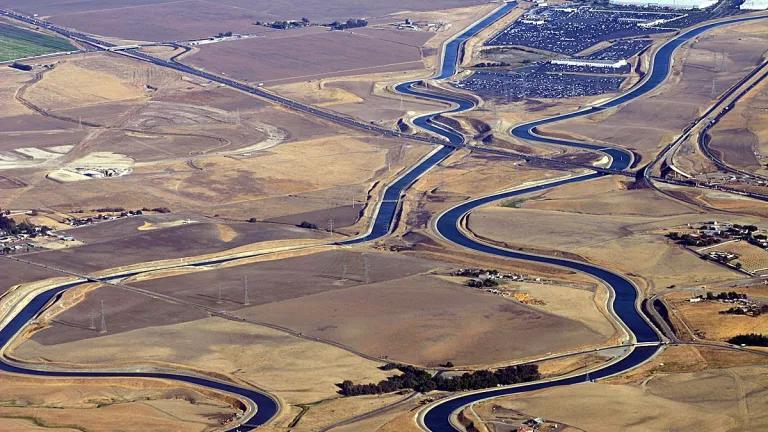
For anyone hungry for more information about reducing food waste, today is a day to feast. "A Roadmap to Reduce U.S. Food Waste By 20 Percent" delivers a robust analysis of 27 different practices that prevent, rescue, or recycle food waste. It dives deep into the details and emerges with a straightforward estimate of how much food could be saved and how much implementation would cost or save in dollars. The biggest surprise for me: from the high-level, "societal" view, every single practice saves more in food value than it costs to implement. In fact, the overall investment in these practices would pay back five-fold in the value of food saved.
NRDC is proud to be a partner in this report, which was produced by ReFED, spearheaded by Mission Point Partners, and written by Deloitte Consulting and Resource Recycling Solutions.[1] When we first envisioned the Roadmap, we knew there was will to act on reducing food waste--the United States, the United Nations, and the Consumer Goods Forum (a consortium of about 400 companies) have all set goals to reduce food waste by 50 percent in the next 10 to 15 years. However, no one has really established a path to get there. There was a void in answering what to do and what to do first. Thus was born ReFED's Roadmap as an effort to provide an analysis to aid prioritization and inspire action--to help companies, investors, philanthropists, governments, and others determine where their focus will get the most food-waste-bang for buck.
The Roadmap is highly quantitative. It's so chock full of information, it's hard to know what to cite first. Rather than summarize, which the report itself does quite well, I'd like to offer a few observations and reactions.
- We are wasting more money than we thought. ReFED employed its own methodology to generate estimates of how much food (and money spent on food) is wasted. The Roadmap's conclusion is that $218 billion of food is thrown out in the U.S. annually. This is over $50 billion more than the commonly used estimate by USDA of $162 billion.
- Wasting less food has a serious upside. If the Roadmap is fully implemented, ReFED projects it would generate 15,000 new jobs, mostly from building and operating compost facilities, utilizing compost, and distributing rescued food. It would double the amount of food rescued across the country. In offsetting demand for food that would no longer be wasted, it would avoid the need for the 1.6 trillion gallons of water--58 days'-worth of water for all the homes in the U.S.--and 18 million tons of greenhouse gases--equivalent to emissions of 3.4 million passenger vehicles.
- An ounce of prevention is worth a pound of cure. The solutions most cost effective for society skew heavily towards prevention, as do those with most direct business profit potential (as opposed to recovery or recycling). While in some ways prevention is hardest, it is also the least capital intensive.
- We need all hands on deck--new and old. We will not achieve the federal goal of reducing food waste by 50 by 2030, or even the Roadmap's estimate of 20 percent reduction, unless we have widespread participation. On one hand, we need new things--innovation in packaging, IT-enabled logistics, and a new cultural paradigm around wasting food. On the other hand, there is much to do even within today's existing system--companies can track their waste, donate more, right size packaging, and improve their inventory, transportation, and production processes. And they don't need to wait for new innovation to do that. It's not an either-or proposition. We need it all to happen to get anywhere close to the goals we as a country have set.
- We need public and socially-minded investment. Not all of the solutions pencil out from a direct investment perspective. Nevertheless, it's in all of our best interest for less food to be wasted. We therefore need a significant amount of public, philanthropic, and socially-minded investment to pay for things that don't result in direct returns.
- Consumer solutions are good investment. Consumer education and standardization of food date labels top the chart for tons of food saved per dollar invested. Fortunately, here at NRDC, we happen to be doing quite a bit on both of those topics. In fact, next month, we will be launching a large public education campaign in partnership with the Ad Council. And since publishing the Dating Game report in 2013, we've been working to find solutions for standardizing date labels.

This Roadmap is just part of the puzzle. Twenty-seven solutions were analyzed; many more exist. And beyond specific solutions, we need to be thinking about our cultural acceptance of wasting food, about the policy backdrop and perverse incentives which inadvertently drive wasting food, and about the small habits - both personal and professional - that add up to quite a bit of wasted food. We will need all of this to truly make the nation's goal to halve food waste.
Nevertheless, the Roadmap gives us an excellent place to start. It shows that the President's food waste goals are not only achievable, but meeting them will save billions of dollars every year. When we waste food, we waste all of the resources it takes to bring it to our plates--from money to farmland, energy and water. Let's use this guide to take action to keep more good food on our plates, and out of the trash.
[1] Confusing, I know! See report intro for details on the many wonderful folks involved.



